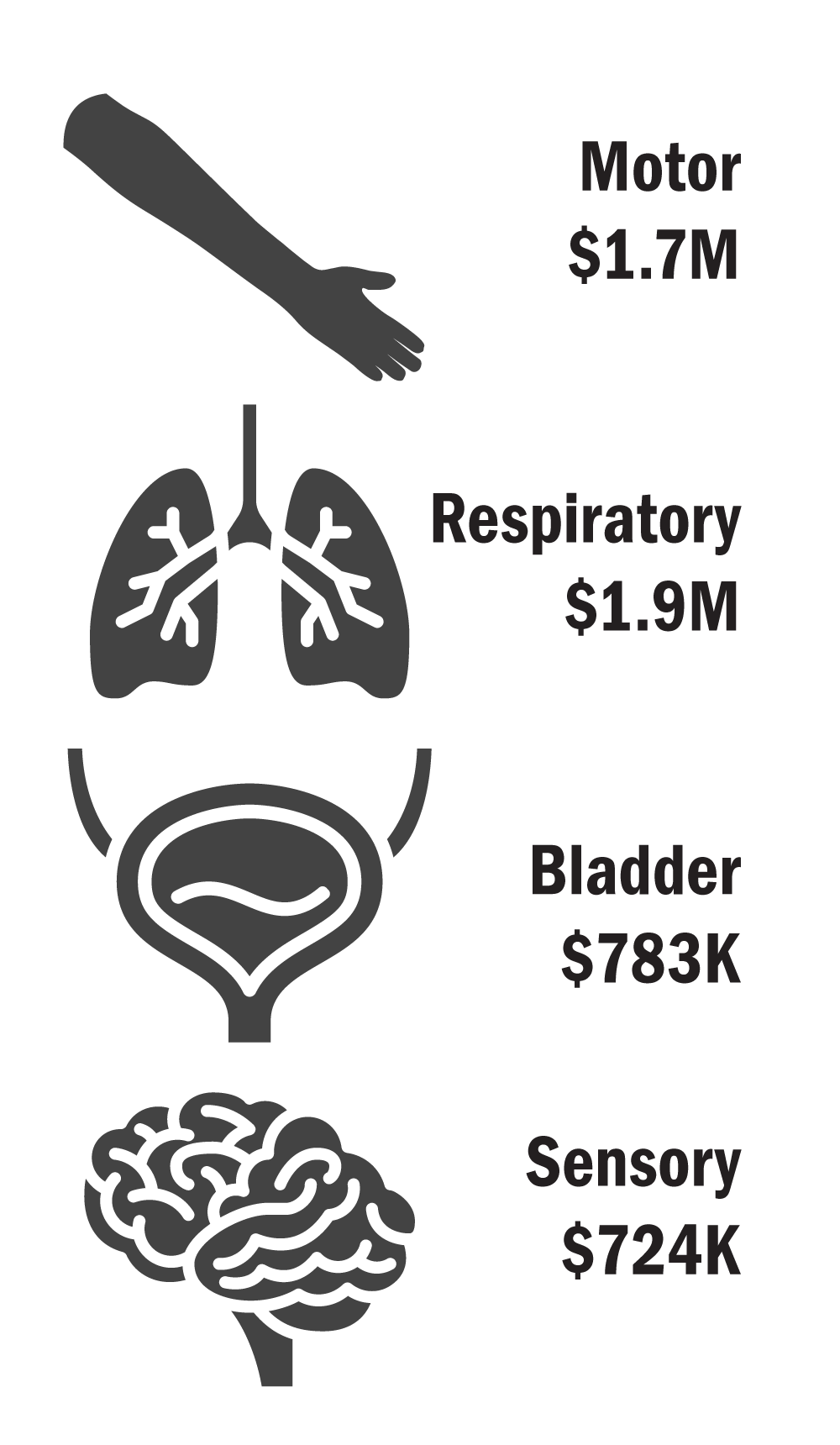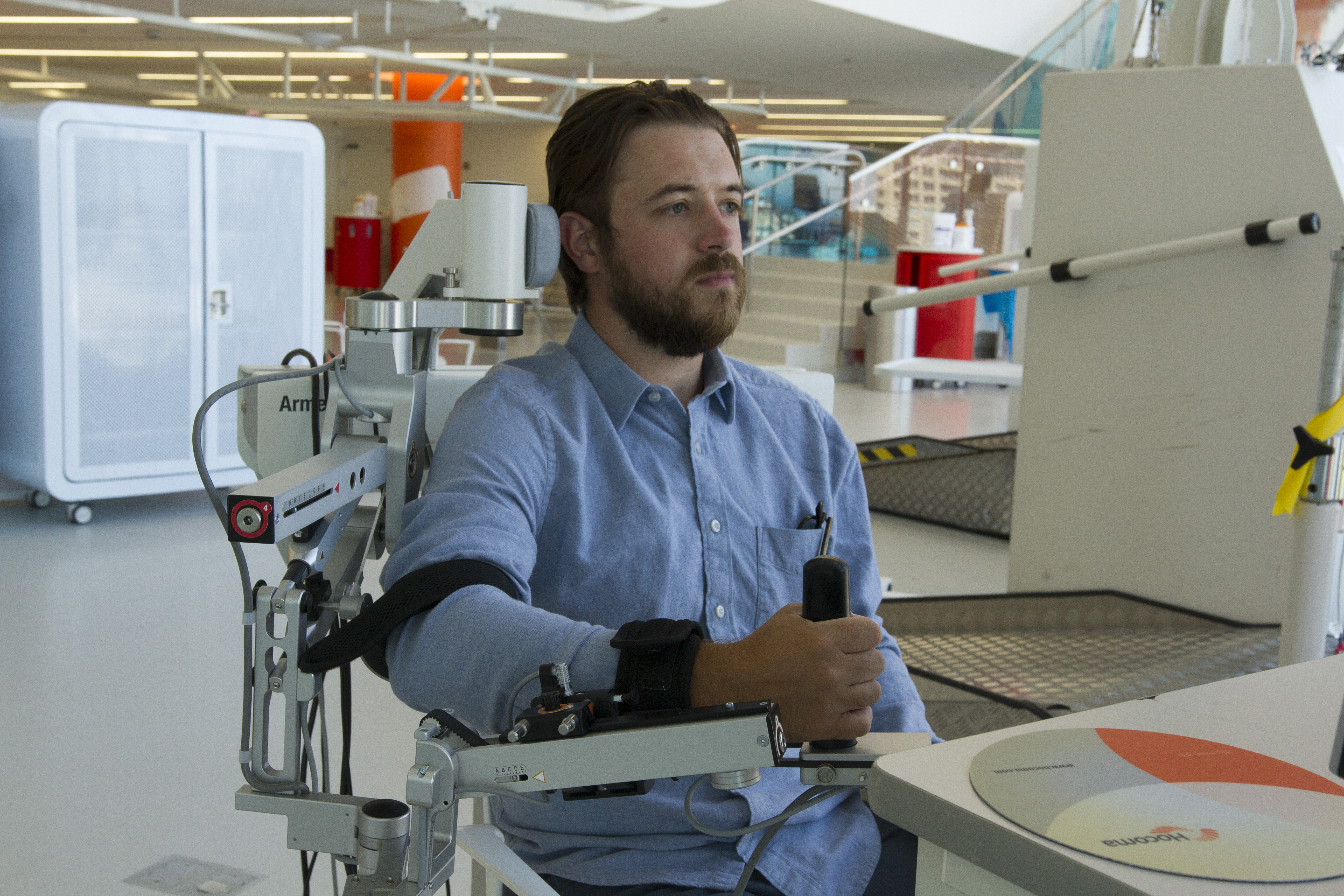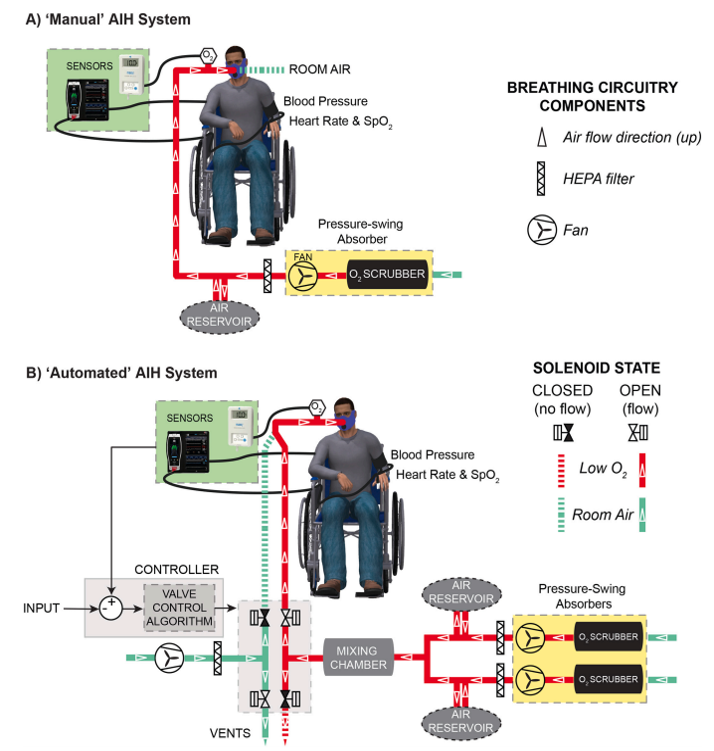Spinal Cord Injury
Acute Intermittent Hypoxia as a Multi-Functional Therapy for Spinal Cord Injuries



Posted November 18, 2020
Spinal cord injuries (SCI) are a devastating injury to the spinal cord, which, besides paralysis, can result in a myriad of life-long, debilitating health challenges to the whole body. The type and severity of SCI-related issues depend on location and degree of the injury, and no two individuals experience a spinal cord injury the same way. One strategy to combat the variability in spinal cord injuries is to identify treatments that have multiple functional benefits across the body. One such treatment is acute intermittent hypoxia, where a person breathes in repeated cycles of low oxygen air (hypoxia) followed by normal oxygen air for a short periods of time. This is a relatively safe and noninvasive therapy and can be coupled with physical rehabilitation strategies to maximize effectiveness. Acute intermittent hypoxia (AIH) holds tremendous promise in promoting walking, upper limb, bladder, and respiratory recovery in persons with SCI.
 The SCIRP AIH investment in the basic, mechanistic research space.
The SCIRP AIH investment in the basic, mechanistic research space.
The Spinal Cord Injury Research Program (SCIRP) is a leading funder in research on AIH and SCI supporting investigation into the effects of AIH on numerous biological systems. This investment is spread across the research and development continuum based on the maturity of the scientific understanding of the mechanisms of AIH on a given system (see Figure 1 for the basic research portfolio breakdown). For example, SCIRP is currently supporting clinical trials testing AIH interventions on respiratory and limb function, while investigation on sensory and autonomic function effects are still only being performed in animal models. The SCIRP AIH portfolio supports over $13 million in research into the basic understand and clinical evaluation of how AIH enhances motor neuron function to restore breathing, bladder, and limb function.
Respiratory Function
 Delivery of AIH and testing of respiratory function at Brooks Rehabilitation Hospital.
Delivery of AIH and testing of respiratory function at Brooks Rehabilitation Hospital.
Motor Function
In addition to improvement in respiratory and bladder function, AIH can improve motor function in those living with SCI. Current efforts supported by SCIRP look to understand the fundamental mechanisms supporting this functional recovery, as well as two clinical trials aimed at determining the efficacy of AIH in arm and hand function as well as walking.
 Demonstration of arm training administered in conjunction with AIH for the "Effect of a Novel Intervention Using Daily Intermittent Hypoxia and High Intensity Training on Upper Limb Function in Individuals with Spinal Cord Injury" clinical trial.
Demonstration of arm training administered in conjunction with AIH for the "Effect of a Novel Intervention Using Daily Intermittent Hypoxia and High Intensity Training on Upper Limb Function in Individuals with Spinal Cord Injury" clinical trial.
Dr. William Rymer is currently conducting a clinical trial at the Shirley Ryan Ability Lab in Chicago, Illinois, “Effect of a Novel Intervention Using Daily Intermittent Hypoxia and High Intensity Training on Upper Limb Function in Individuals with Spinal Cord Injury” (NCT03643770), coupling AIH with arm and hand training to test the effectiveness of AIH on increasing function via strengthened spinal cord neuronal plasticity. Enrollment is underway for this study and 18 individuals have successfully completed the trial. The trial is currently recruiting additional participants.
 Dr. Trumbower and a participant after AIH treatment.
Dr. Trumbower and a participant after AIH treatment.
Dr. Randy Trumbower at Spaulding Rehabilitation Hospital was funded in SCIRP’s inaugural year for a project that demonstrated successful restoration of walking after AIH in people living with motor-incomplete SCIs (W81XWH-10-1-0832). Following this work, Dr. Trumbower is now leading another SCIRP-funded clinical trial, W81XWH-15-2-0045, “AIH-Induced Walking Recovery After Subacute SCI” (Clinical Trials.gov registration NCT02632422). This trial is testing whether AIH can restore walking function in both ambulatory and nonambulatory individuals who are less than a year post-SCI. This acute injury trial is still recruiting participants and has expanded their selection criteria to include participants willing to travel to the Boston, Massachusetts geographical area. Preliminary data based on the first cohort of participants shows successful improvement of walking function in some individuals.
This month, Experimental Neurology has a Special Issue on Intermittent Hypoxia (Volume 330, November 2020), edited by Dr. Gordon Mitchell, Dr. Randy Trumbower, and Dr. Gillian Muir, current and past recipients of SCIRP awards. In this issue, Dr. Trumbower describes his group’s successful effort to automate AIH delivery and provides data indicating automated AIH performance is more consistent and controlled than manual delivery (see figure). This automated AIH delivery system is supported by SCIRP and represents a significant leap forward for AIH as a therapeutic. Automated AIH delivery is necessary in order to be successfully implemented in clinics and for future home use, and Dr. Trumbower is leading the way for wide-spread implementation of this safe, noninvasive therapy for individuals living with SCI. Furthermore, this issue will highlight recent scientific advances in AIH research and translation of this therapeutic approach to individuals living with SCI.
 From Experimental Neurology, 2020 Nov;333:113408. "Comparison of manual and automated AIH delivery methods."
From Experimental Neurology, 2020 Nov;333:113408. "Comparison of manual and automated AIH delivery methods."
References:
https://clinicaltrials.gov/ct2/show/NCT02632422
https://clinicaltrials.gov/ct2/show/NCT03833674
https://clinicaltrials.gov/ct2/show/NCT03643770
Tan AQ, Papadopoulos JM, Corsten AN, and Trumbower RD. 2020. An automated pressure-swing absorption system to administer low oxygen therapy for persons with spinal cord injury. Exp Neurol. 2020 Nov;333:113408. doi: 10.1016/j.expneurol.2020.113408. Epub 2020 Jul 17. PMID: 32682613; PMCID: PMC7502479.
Naidu A, Peters DM, Tan AQ, et al. 2020. Daily acute intermittent hypoxia to improve walking function in persons with subacute spinal cord injury: A randomized clinical trial study protocol. BMC Neurol. 2020 Jul 8;20(1):273. doi: 10.1186/s12883-020-01851-9. PMID: 32641012; PMCID: PMC7341658.
Perim RR, Kubilis PS, Seven YB, and Mitchell GS. 2020. Hypoxia-induced hypotension elicits adenosine-dependent phrenic long-term facilitation after carotid denervation. Exp Neurol. 2020 Nov;333:113429. doi: 10.1016/j.expneurol.2020.113429. Epub 2020 Jul 29. PMID: 32735873; PMCID: PMC7525659.
Last updated Wednesday, March 12, 2025














